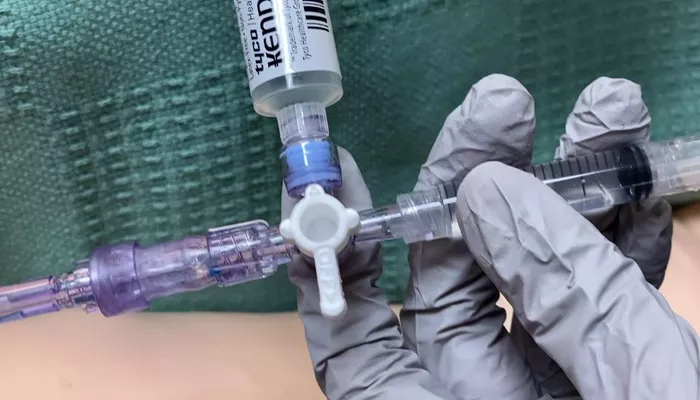Adenosine is a naturally occurring nucleoside that plays a critical role in various physiological processes, including acting as a key component in energy transfer, regulating blood flow, and modulating neurotransmitter release. In the realm of cardiology, adenosine is primarily recognized for its role in managing certain types of cardiac arrhythmias. This article delves into the specific arrhythmias for which adenosine is given, how it functions, its mechanisms, and its clinical application.
What Is Adenosine?
Adenosine is an endogenous compound that affects the cardiovascular system by binding to adenosine receptors in the heart. When administered intravenously, adenosine has potent effects on the heart’s conduction system, particularly at the atrioventricular (AV) node, where it can slow or temporarily block electrical impulses. This unique action makes it a powerful tool in the management of specific supraventricular arrhythmias.
How Does Adenosine Work?
Adenosine works by hyperpolarizing the atrioventricular node’s cellular membrane, which leads to a temporary block in the conduction of electrical signals from the atria to the ventricles. This action slows the heart rate, allowing for the restoration of normal rhythm in certain arrhythmias. Adenosine’s rapid onset and short half-life (approximately 10 seconds) make it particularly useful in emergency situations where quick diagnostic or therapeutic interventions are required.
SEE ALSO: What Are The Medications for Premature Ventricular Contractions
The Role of Adenosine in Cardiac Arrhythmias
Adenosine is specifically indicated for the treatment of certain supraventricular tachycardias (SVTs), which are arrhythmias that originate above the ventricles. The most common type of arrhythmia for which adenosine is given is paroxysmal supraventricular tachycardia (PSVT). This condition is characterized by a rapid heart rate that originates in the atria or AV node.
Paroxysmal Supraventricular Tachycardia (PSVT)
Paroxysmal Supraventricular Tachycardia (PSVT) is the primary arrhythmia for which adenosine is administered. PSVT is a type of supraventricular tachycardia (SVT) that manifests as sudden episodes of rapid heartbeats, usually exceeding 100 beats per minute. These episodes can start and stop abruptly and are often triggered by an extra electrical pathway in the heart that bypasses the AV node, leading to a reentrant circuit that causes the heart to beat rapidly.
Clinical Application of Adenosine in PSVT
When a patient presents with PSVT, adenosine is often the first-line treatment. Administered as a rapid intravenous push, adenosine quickly reaches the heart and temporarily blocks conduction through the AV node. This brief interruption in electrical conduction can effectively terminate the reentrant circuit responsible for PSVT, restoring the heart to a normal sinus rhythm.
Diagnosis And Confirmation
In addition to its therapeutic role, adenosine can also aid in diagnosing arrhythmias. By slowing or blocking AV nodal conduction, adenosine can unmask underlying atrial activity, such as flutter or fibrillation, helping clinicians to differentiate between different types of SVTs. This diagnostic utility is another reason adenosine is widely used in emergency settings.
Other Supraventricular Arrhythmias
While PSVT is the most common arrhythmia treated with adenosine, it may also be used in the management of other supraventricular arrhythmias under certain circumstances. These include atrial tachycardia, atrial flutter, and certain forms of atrial fibrillation, particularly when the rhythm is thought to involve an AV nodal reentrant mechanism.
Atrial Tachycardia
Atrial tachycardia is an arrhythmia originating from an ectopic focus in the atria, outside of the sinus node. While adenosine is not typically used as a first-line treatment for atrial tachycardia, it may be used to diagnose or differentiate it from other forms of SVT. In some cases, adenosine may terminate atrial tachycardia if it involves an AV nodal-dependent mechanism.
Atrial Flutter And Atrial Fibrillation
Adenosine is generally not effective in terminating atrial flutter or atrial fibrillation because these arrhythmias are typically not dependent on AV nodal conduction. However, in certain diagnostic situations, adenosine may be used to temporarily slow the ventricular rate, allowing for better visualization of the underlying atrial rhythm.
Risks And Considerations in Adenosine Administration
Side Effects and Contraindications
While adenosine is generally safe and well-tolerated, its administration is not without risks. The most common side effects include chest discomfort, flushing, shortness of breath, and a sense of impending doom, which are typically short-lived due to adenosine’s rapid metabolism. However, adenosine is contraindicated in patients with certain conditions, such as second- or third-degree AV block, sick sinus syndrome, or severe asthma, due to the potential for adverse effects.
Alternatives to Adenosine
While adenosine is highly effective in treating PSVT, other pharmacological and non-pharmacological options are available for managing supraventricular arrhythmias. These include calcium channel blockers (e.g., verapamil, diltiazem), beta-blockers (e.g., metoprolol), and vagal maneuvers (e.g., carotid sinus massage). In cases where pharmacological therapy is insufficient or contraindicated, electrophysiological studies and catheter ablation may be considered.
Conclusion
Adenosine is a powerful and effective treatment for certain supraventricular arrhythmias, particularly paroxysmal supraventricular tachycardia (PSVT). Its rapid onset, short duration of action, and ability to temporarily block AV nodal conduction make it an invaluable tool in both the diagnosis and treatment of these arrhythmias. However, its use must be carefully considered, particularly in patients with contraindications or those at risk for adverse effects.


